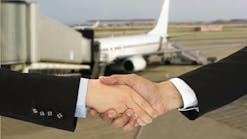South Korean Aviation Sector Shows Positive Signs in Q2 but Full Recovery Will Take Time, Says GlobalData
The South Korean aviation sector, which had witnessed a sharp decline in the first quarter (Q1) due to COVID-19 pandemic, is showing signs of recovery with the country’s two major carriers Korean Air Lines (Korean Air) and Asiana Airlines reporting positive results in the second quarter (Q2) of 2020. However, a full recovery will take time considering the impact of the spread of the pandemic, according to GlobalData, a leading data and analytics company.
Reportedly, Korean Air and Asiana Airlines had a market share of 19.24% and 13.64%, respectively, in Q2 2019. The companies reported operating losses of KRW56.6bn and KRW292bn, respectively, in Q1 2020. However, the two airlines have turned it around in Q2 2020.
Korean Air reported a year-on-year operating profit of KRW 148.5bn in Q2 on account of surge in cargo sales. On annual basis, the pandemic affected the company’s revenue by 44%. However, a reduction of 50.1% in operating expenses enabled it to generate profit.
On the other hand, Asiana Airlines reported operating profit of KRW 23.4bn. On annual basis, revenue decreased by 49.2% but operating expenses fell by 52.8%, leading to operating profit.
Alisha Bajpai Singh, company profiles analyst at GlobalData, says, “The sector is on the recovery path due to the reduction in the fuel prices, salaries and employee related expenses that enabled the leading airlines to manage costs while increased transportation of emergency equipment strengthened cargo sales mainly from the American routes that further led to the profits.”
The aviation sector experienced shortages in the capacity of airfreight, arising from the grounding of the passenger belly capacity, which increased the airfreight rates. The pandemic strained several carriers to pull cargo to generate cash from the increasing airfreight rates.
Singh continues, “Booming online commerce and increased demand for medical equipment helped cargo carriers. Increased exports of semiconductors, which is the country’s biggest export, coupled with the growing demand of smartphones, televisions, components and memory chips from South Korean companies including Samsung, LG, and SK, further contributed to the growth of cargo shipments.”
According to the International Air Transport Association, collapsed passenger revenue coupled with ticket refunds and other unavoidable costs led to an increased cash burn. Cash aid provided by the government could help the airlines to continue operations. However, that puts the companies in the high level of debts and leave to airlines companies with higher debt in 2021.
Singh concludes, “The demand for travel and air cargo is expected to rise in 2021. However, overall it is expected to remain lower than 2019, with considerable COVID-19 related uncertainty expected to linger into 2021.”




